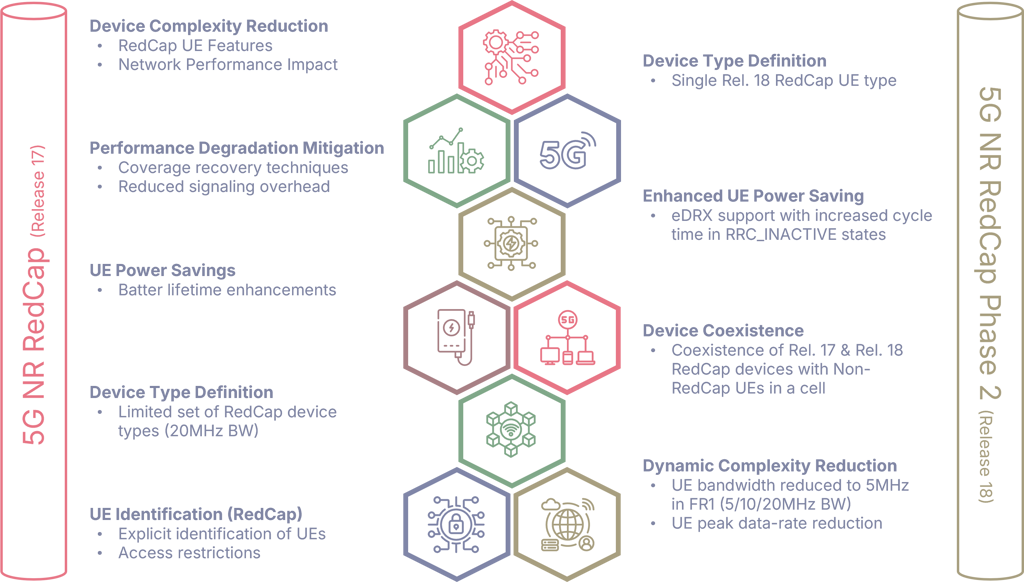RedCap for 5G Efficiency
RedCap Build Operational and Cost Efficiencies into 5G Networks
2 Minute Read
Introducing Reduced Capability (RedCap) devices in 5G New Radio (NR) networks is expected to provide a lower-cost and lower-complexity option for various IoT use cases. RedCap devices have reduced hardware requirements compared to regular 5G NR devices, making them suitable for wearables, industrial sensors, and augmented/virtual reality applications. These devices can achieve peak data rates of up to 150 Mbps in the downlink and 50 Mbps in the uplink, and they offer extended battery life through extended discontinuous reception (eDRX) cycles.
The market potential for RedCap use cases is significant, with wearables alone estimated to generate global end-user spending of USD 81.5 billion in 2021. RedCap devices can support cost-efficient Industry 4.0 transformation by providing robust wireless connectivity and seamless mobility support for industrial devices. They can efficiently support use cases falling between the requirements for massive machine-type communications (mMTC), ultra-reliable low-latency communications (URLLC), and enhanced mobile broadband (eMBB). Additionally, RedCap devices utilize low/mid and high-frequency bands and support various 5G NR features, including enhanced positioning, millimeter-wave operations, and network slicing.
When deploying RedCap devices in a network, it is essential to consider network deployment aspects to ensure efficient coexistence with other device types. RedCap devices may have reduced bandwidth or antenna capabilities, which can affect the performance of downlink channels. However, the coverage of RedCap devices is similar to regular 5G devices, as the downlink channel performance of RedCap devices is better than that of standard UEs. Implemented mechanisms minimize resource fragmentation and signaling overhead associated with RedCap device transmissions.
In conclusion, RedCap devices offer a cost-efficient and energy-efficient solution for IoT applications in 5G networks. They provide a lower-cost option for a variety of use cases and have the potential to enable digitalization and business transformation in industries. Further enhancements and simplifications are expected in future releases to support existing use cases and expand into new segments.
